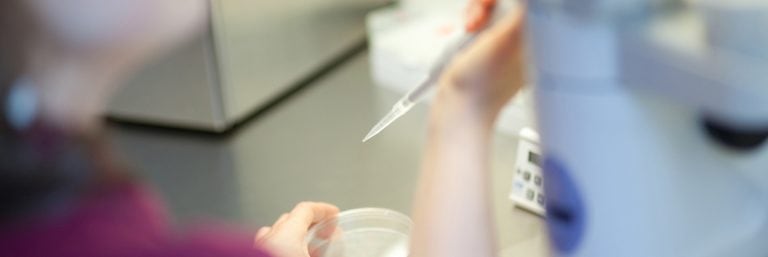NC-IVF
Natural Cycle IVF, IVF in the natural cycle
The very first IVF treatments, including the one that resulted in the world’s first baby, Louise Brown, were natural cycle test tube fertilizations. The disadvantage of having only one egg available at a time in this procedure was countered by introducing hormonal stimulation. The problem of premature ovulation, which occurred relatively frequently, was solved by the use of GnRh analogues and later also antagonists.
However, it is only after several decades that people are once again considering whether performing IVF (and of course ICSI) in the natural cycle, in addition to today’s conventional IVF, might have some advantages.
NC-IVF (Natural Cycle IVF) is an extremely gentle procedure in which hardly any medicinal influences.
Treatment in the unstimulated cycle has no risk of overstimulation syndrome (OHSS), multiple pregnancies are extremely rare, it is much less emotionally and physically stressful, and it is significantly cheaper.
However, it should not be concealed that it is less effective and promising. The pregnancy rate per cycle is lower than with conventional IVF. This is due to the fact that in 10-15% of cases, due to premature ovulation, the eggs are not even retrieved. Another reason is that only one egg can be fertilized. However, since on average only 80% of eggs can be fertilized in IVF (NC or conventional), it goes without saying that the success rate is lower.
In recent years, there has been an increase in scientific research showing that the ability of the endometrium to implant an embryo seems to be lower in women undergoing conventional IVF than under normal conditions. This circumstance is attributed to the extremely high estrogen level due to stimulation.
However, the almost complete absence of risks is an enormous advantage. Only the small, uncomplicated, egg retrieval has a theoretical risk. The overall cycle is perceived as much less stressful.
Neither GnRH antagonists nor agonists are required. The problem of premature ovulation is easily solved by the administration of certain medications (as pills or suppositories). Only the somewhat more frequent ultrasound and hormone examinations mean a certain amount of time and effort for the patient and the practice.
Egg collection can be performed without anesthesia (with local anesthesia if desired). This means that the woman can, in principle, go to work on the same day. Since the ovaries are not cystically enlarged due to hormonal stimulation, this treatment can be performed on several consecutive cycles without any problems. It should not be forgotten that such cycles are considerably cheaper than stimulated ones, but the pregnancy rate after embryo transfer (only ONE embryo) is 20% per embryo transfer, which is naturally lower than in “conventional IVF“, where 2 to 3 embryos are transferred. However, you will see how little such a cycle stresses you mentally and physically.
Which women are suitable for IVF / ICSI in the natural cycle?
- Women who do not want to have hormonal treatment
- Women who have had bad experiences with hormonal stimulation
- Women with a high risk of overstimulation syndrome (OHSS)
- The so-called “low-responders”, i.e. women who respond poorly to hormonal stimulation
- Older women, who often only produce 1-3 eggs despite hormonal stimulation
- “Implantation failures”, i.e. women who have always had good embryos in conventional IVF, but in whom implantation has never occurred.
